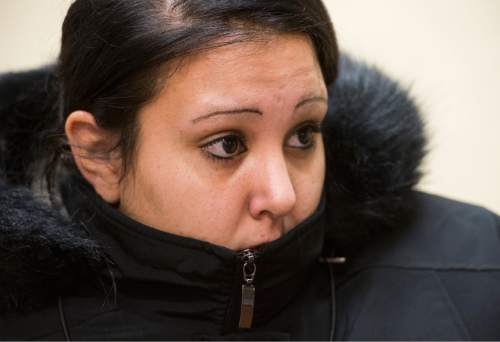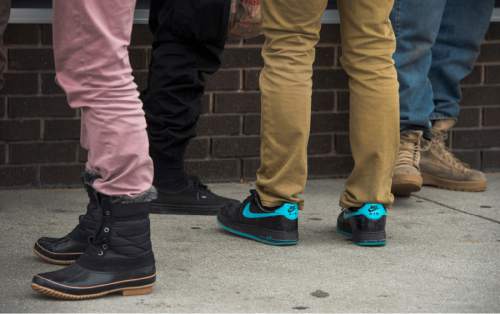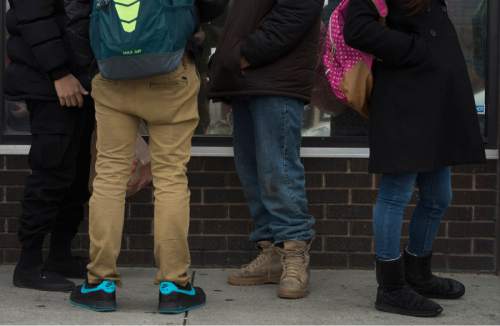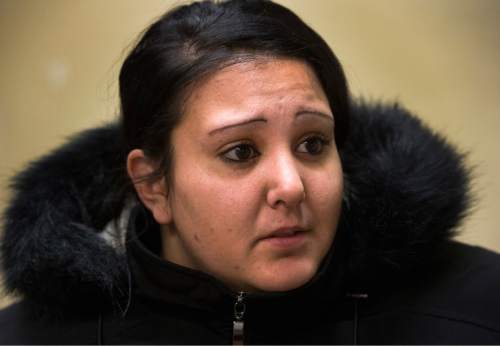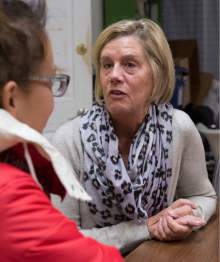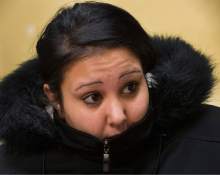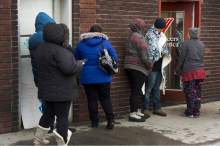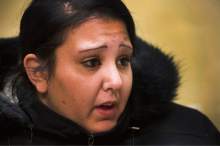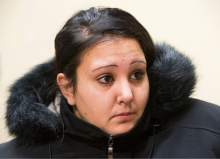This is an archived article that was published on sltrib.com in 2015, and information in the article may be outdated. It is provided only for personal research purposes and may not be reprinted.
For young people living on the streets, it's a refuge where support and friendship make a critical difference.
Every day young people come out of the cold at 4 p.m. for a meal at the Volunteers of America Homeless Youth Resource Center on State Street in Salt Lake City. But Monday, they lined up an hour early for "Fill the Pack" day, where teenagers and young adults get backpacks filled with essentials, such as a hat, gloves, underwear, bus tokens and a first-aid kit, among other things.
Between now and the first of the year, VOA will give away some 150 packs, said spokeswoman DeAnn Zebelean.
They'll go to people like Breanna Malin, who has been on the street since age 18. She left home, she said, over "family troubles" four years ago.
Two weeks ago, Malin found a place to live. In January she will attend the Utah College of Massage Therapy. Her goal, like most homeless youths, is to be independent.
"I try to be strong, but it can be a little scary," she said of being homeless. "I'm pretty sure I would have froze to death without the VOA.
Helping young people become independent is what the Homeless Resource Center is all about, said Rob Wesemann, director of homeless services.
"Our clients don't want to be seen as homeless," he said. "They want to be seen as any other person on the street."
The VOA also supplies coats and other clothing and helps them find housing and jobs, but that's just the beginning of what young people need, Wesemann said.
"We know they are facing a lack of connectedness with family and friends," he said. "They'll tell us things like, 'I'm not getting along with my friends.' "
For most, it's hard to imagine life on the street during a Salt Lake City winter. Many homeless youths avoid the shelter because they don't like the atmosphere created by some homeless men.
"These are pretty tough individuals," Wesemann said. "Life has thrown a lot at them, but they find ways to make things work."
For young homeless people, like Malin, the VOA makes a critical difference. It's where she met most of her friends.
"It can be lonely, hard and depressing," she said. "A lot of times I felt like suicide would be better than homeless."
Malin said she wishes people could understand that not all homeless people are drunks and drug addicts.
"Basically, we are going through a struggle in life," she said. "It's not fair for people to treat us like scum because we are homeless."
"Fill the Pack" day, along with cookies and other treats, is designed to help lift spirits during the holidays, Zebelean said.
It was started five years ago by volunteer Martha Cook, whose son died unexpectedly several years earlier. She had donated some of her son's clothing to the Youth Resources Center. When she watched some homeless teens gush as they tried on his old clothes, she burst into tears.
Cook told VOA officials she wanted to do more and launched the "Fill the Pack" program through emails to friends asking for donations.
"It just mushroomed," she said of its growth since then. This year's program raised $15,000.
Cook feels a connectedness to her son through the program, she said.
"They are just kids," she said. "Yes, they have challenges. But they are just kids and they need support — just like all kids."



